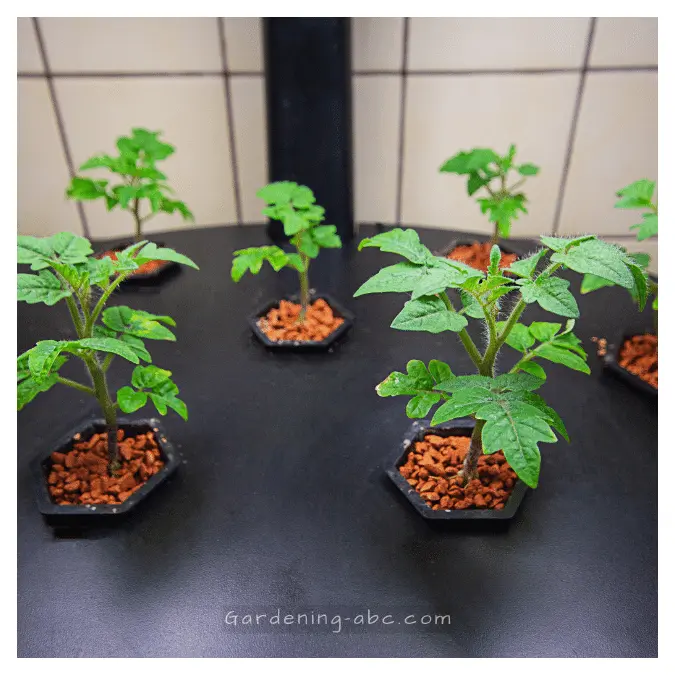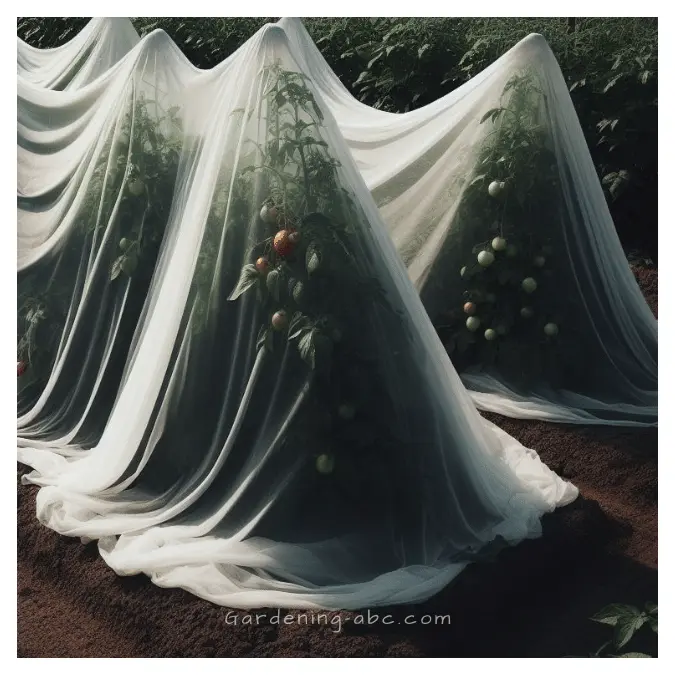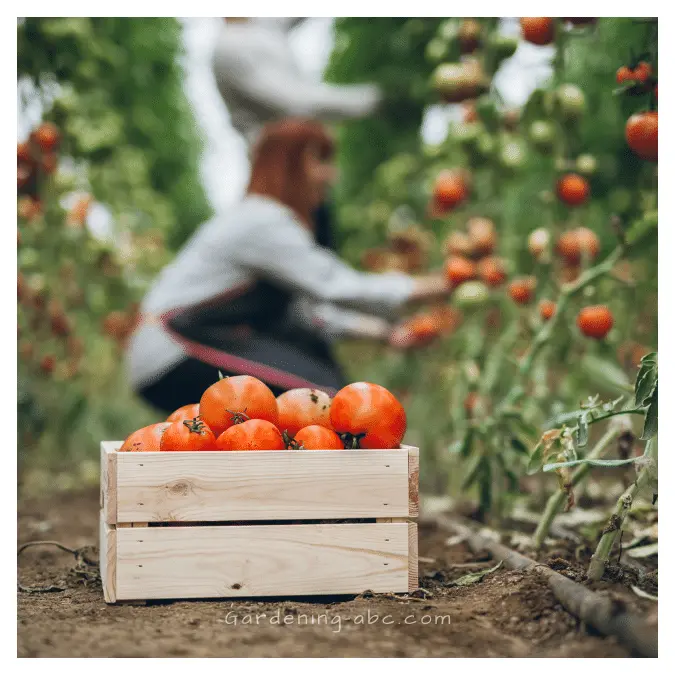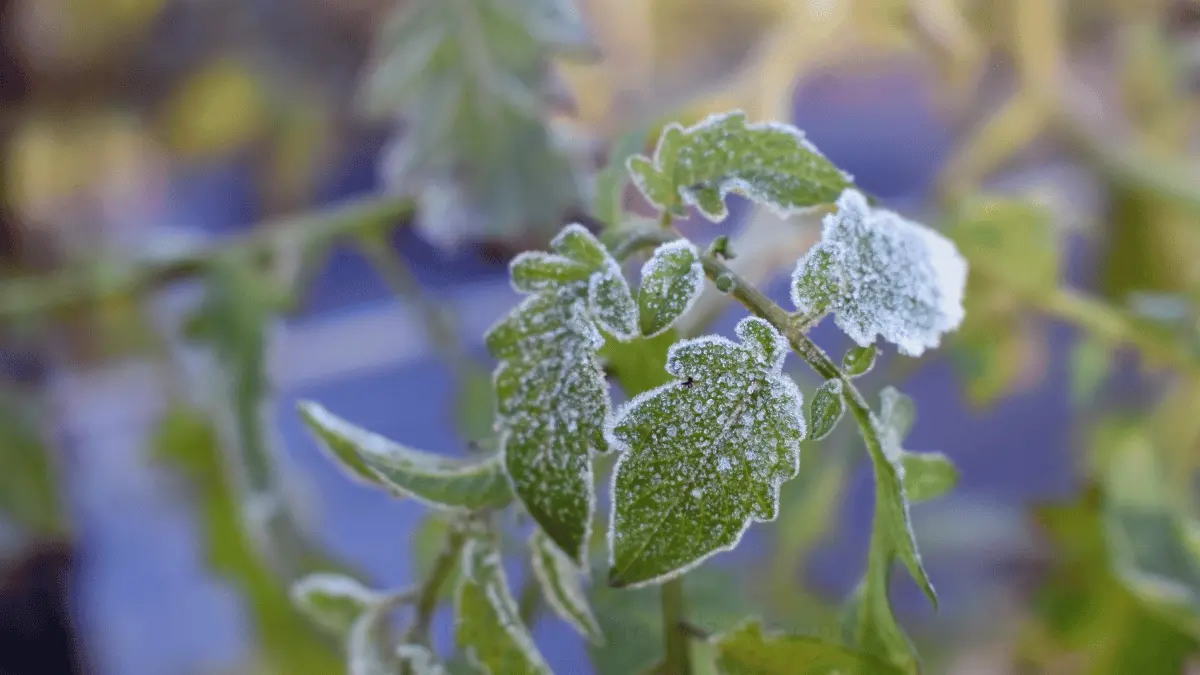We use affiliate links to run our site. When you buy through links on our site, we may earn an affiliate commission, without any added cost to you. Learn more
Bitter cold can spell disaster for beloved tomato plants. You wake one frosty morning to find limp, blackened vines and spoiled green tomatoes scattered on the ground. All that time and care invested, gone in one frigid night.
Every gardener dreads losing warm-weather crops to an early cold snap or first fall frost. The good news? With a bit of preparation and knowledge, you can enjoy tomato bounty right up until winter’s arrival.
This guide shares wisdom on maximizing harvests through strategic cold protection methods. Learn exactly how cold is too cold for tomatoes, low-cost techniques to shield plants, and tips to extend both ends of the growing season.
Give your plants the best shot at producing loads of ripe tomatoes before Ol’ Man Winter shows up on your doorstep!
How Cold Temperatures Affect Tomato Plants
Tomato plants thrive in warm weather, preferring daytime temperatures of 70-85°F (21-29°C) and night temperatures above 55°F (13°C). Once temperatures drop much below this, plants suffer damage in stages:
- 33-40°F (-1 – 4°C) – Frost kills tomato plants. Prolonged exposure causes chilling injuries like wilted, curled leaves and pitted fruits.
- 41-50°F (5 – 10°C) – Flowers drop. Poor fruit set later due to less pollen production. Pitting, spots on fruits.
- 51-55°F (11 – 13°C) – Stunted growth. Increased flower drop. Poor fruit flavor and texture. Lower yields.
The colder the temperature and the longer the duration, the more severe the effects. Even a few hours below 50°F can set back plants for weeks. Protecting against cold is crucial, especially at night when plants are most vulnerable.

Best Ways to Protect Tomato Plants from Cold
Here are both traditional and modern methods for shielding tomatoes from cool temperatures:
Wait for Warmer Weather
- Start seeds indoors 6 weeks before the last expected frost.
- Transplant outdoors 2-3 weeks after the last frost date when the soil has warmed.
Choose Cold Tolerant Varieties
- Early ripening types mature before cold arrives.
- Look for labeled cold-tolerant, cool-season varieties.
Provide Warm Microclimates
- Use large pots to grow tomatoes, moving indoors/outdoors as needed.
- Plant in sheltered southern spots against buildings.
- Grow in high tunnels, cold frames, and greenhouses.
Insulate Plants Overnight

- Drape fabric row covers directly over plants.
- Create tents around plants using wooden stakes and tarps.
- Cover cage supports with clear plastic for the greenhouse effect.
Add Supplemental Heat
- String incandescent holiday lights under covers.
- Position heat lamps nearby.
- Place old blankets or burlap on cages at sundown.
Water Well Before Cold Nights
- Hydrated plants better withstand cold temperatures.
- Water early so soil absorbs before temperatures drop.
Monitor Weather Closely
- Observe forecasts and get familiar with microclimates on your land.
- Be ready to protect plants anytime cold threatens.
Pick Produce Promptly

- Harvest ripe tomatoes just before a frost to extend your season.
- Pull up entire plants and hang them in cool indoor areas to slowly ripen more fruit.
Growing Season Extension Tips
Here are a few more ideas for safely getting a head start on spring planting and delaying the end of your fall harvest:
| Tip | Description |
|---|---|
| Harden off transplants | Gradually expose transplants to colder temps over 7-10 days before transplanting to toughen cells against cold shock |
| Use cloches | Cover seedlings with bell-shaped glass or plastic coverings when transplanting to provide portable protection |
| Install plastic mulch | Use black or red plastic mulch around plants to absorb and radiate heat into the soil |
| Prune plants | Prune plants lightly and frequently to stimulate new growth that’s less prone to cold damage |
| Harvest ripening fruit | Pick fruit as it ripens to prevent losing the whole plant if cold arrives suddenly |
| Overwinter plants indoors | Transplant some plants into large containers to overwinter indoors in a sunny window |
- Harden off transplants by gradually exposing them to colder temperatures over 7-10 days before transplanting. This toughens cells against cold shock. For example, start putting transplants outdoors in a shady spot for just 1-2 hours on day 1. Slowly increase the duration and sun exposure over a week. The cold conditioning prepares plants for transplant shock.
- Cover seedlings with cloches (bell-shaped glass or plastic coverings) which offer portable protection as you transplant. The mini greenhouse environment regulates temperature and moisture levels. Cloches can be placed directly over plants in the ground or potted plants. They allow sunlight through while trapping warmth.
- Install black or red plastic mulch around plants to absorb and radiate heat into the soil. The dark colors attract and retain more heat. The mulch also helps conserve soil moisture. Plastic mulches provide several growing benefits beyond cold protection. Just be sure to lay drip irrigation underneath.
- Prune plants lightly and frequently to stimulate new growth which is less prone to cold damage. Removing old foliage and flowers forces plants to generate new buds and leaves better adapted to current conditions. It also improves air circulation and light exposure.
- Pick fruit as it ripens to prevent losing the whole plant if cold arrives suddenly. Harvesting ripe tomatoes early when frost threatens allows you to safely gather any last produce. You can pull plants up by the roots and hang them upside down indoors to slowly ripen more fruit.
- Consider transplanting a few plants into large containers to overwinter indoors in a sunny window. Choose your healthiest plants with some green tomatoes still on the vine. The container environment allows you to continue nurturing select tomatoes over the winter.
Conclusion
Now you know how to give your tomatoes the warm conditions they love, even in cooler climates. Try out small-scale protection methods at first to see what works best for your plants and property.
Share these ancient Native American secrets with fellow gardening friends and family. Dig in and watch your sacred tomato plants thrive with the right care.
Amazon and the Amazon logo are trademarks of Amazon.com, Inc, or its affiliates.

Hi there! My name is Prasenjit and I’m an avid gardener and someone who has grown a passion for growing plants. From my hands-on experience, I have learned what works and what doesn’t. Here I share everything I have learned.
